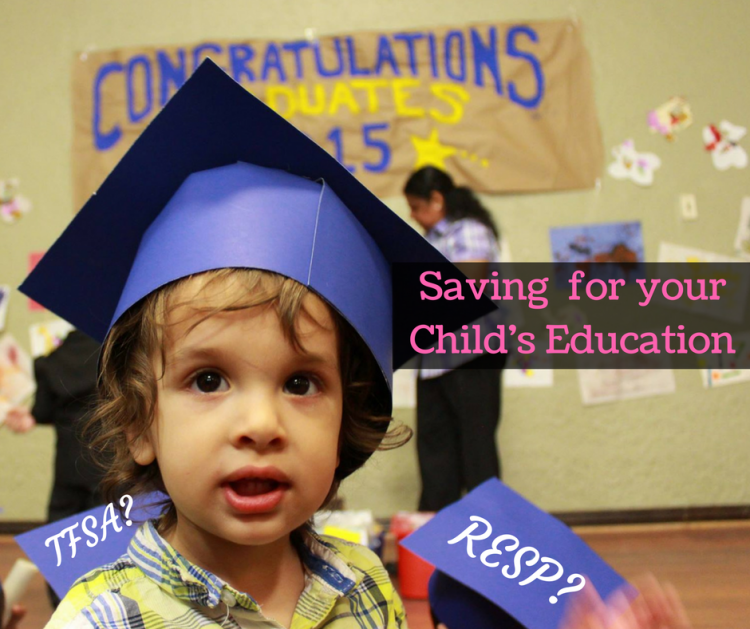 Not long after our first child was born (Little Monkey), we began to think about her education. Leading up to the birth, we had been taking steps to ensure her health and happiness, including an investment in Cord Blood storage, and now that she had entered our world, we began to focus on our long term responsibilities as parents.
Not long after our first child was born (Little Monkey), we began to think about her education. Leading up to the birth, we had been taking steps to ensure her health and happiness, including an investment in Cord Blood storage, and now that she had entered our world, we began to focus on our long term responsibilities as parents.
When it came to education, I was able to put the knowledge I had gained as a Finance Major, and mapped out a strategy that would allow us to save a lot of money for our kids’ education (we welcomed a son two years later). Knowing that they would grow up in a society that would increasingly require highly skilled, well educated professionals, we anticipated that their education would cost a lot, which is why we developed a strategy to save safely and efficiently. Here are the 5 steps we took to ensure that our kids will be able to graduate debt free.
1) Open a Registered Education Savings Plan (RESP)
Ask your financial institution to help you set up an RESP. Individual or family RESPs can be set up and payments into the RESP can be made directly to your financial institution, which then releases the funds as your child progresses through secondary education. The Government of Canada will contribute a Canada Education Savings Grant (CESG), equivalent to 20% of the yearly amount deposited, up to $500 per child per year. To maximize this benefit, try to contribute $2,500 per child, every year. This money can not be deducted on your tax return, but the investment income earned will essentially be tax free, since it will be used by your child for education and the cost of that education is deductible. Should your child not pursue secondary education, the money can still be withdrawn, but the CESG amount would be returned to the government.
2) Diversify the RESP investment and gradually decrease the risk of the portfolio
Money contributed to an RESP can be invested almost anywhere, from low risk savings accounts to high risk stocks. When your kids are young, it makes sense to place more investment dollars into stocks rather than bonds and savings accounts, but stocks are more volatile and so your investment mix should change as your child gets closer to pursuing secondary education. For the first 8 years, a mix of 65 to 75% of the funds in stocks and 25 to 35% in bonds should allow you to gain strong returns. Shifting to a 50/50 mix when your child is between the ages of 8 and 12, followed by a 25/75 mix of stocks to bonds between the ages of 12 and 18, will allow you to reduce the risk of the portfolio over time. Once your child has started school, it would be wise to shift all funds to a savings account or a Guaranteed Investment Certificate (GIC) to prevent any financial losses while your child needs the money.
3) Invest in Index Funds rather than Managed Mutual Funds.
You bank or investment advisor won’t voluntarily advise you to invest in Index Funds because that’s not where they make their money. All Investment Funds offered by a financial institution charge a certain percentage of the fund’s value to manage the assets within. This is referred to as the Management Expense Ratio (MER), and this fee is lowest on Index Funds. That’s because these funds require that the stocks or bonds contained within are tied directly to an index like the TSX or the S&P 500. Two of the funds I invest in are the RBC U.S. Index Fund, which uses the S&P 500 as a benchmark, and the RBC Canadian Index Fund, which uses the S&P/TSX Composite Total Return Index. For each of these funds, the MER is 0.72%. Most mutual funds, which can be more risky and don’t consistently perform better than index funds, have an MER between 2 and 3% per year. Investing in Index Funds isn’t just my advice. Warren Buffet, perhaps the most successful investor who has ever lived, gives the same advice to the average investor. For those who don’t have the time to do extensive research on picking stocks, which is most of us, Index Funds are the amongst the best investments to make.
4) Contribute Monthly rather than Yearly
Referred to as Dollar Cost Averaging, making a monthly contribution to your child’s RESP (and to all of your investments), allows you to reduce risk of your investment activities. The reason is simple. The stock market is constantly fluctuating, and by making regular, equal contributions, you are able to buy more of a given stock when the price is low, and in turn, buy less when the price is high. The more frequently you invest in the same stock or investment fund, the more you are reducing the risk of buying a big chunk of stock when the price is too high. We have 2 kids, and so I have setup an automatic monthly contribution of $420 to our Family RESP, which is approximately $5,000 per year, allowing us to receive the maximum CESG of $1,000 per year. If I can obtain a 6% return per year on these contributions, I should end up with about $200,000 for our kids’ education, $100,000 per child. Is that enough? Probably not, but it will certainly help.
5) Use a Tax-Free Savings Account to make additional contributions
It would be nice if Canada allowed TFSA accounts for residents under 18 years old, but in lieu of that, two parent families have $11,000 per year in contribution room in their TFSA accounts, contribution room that can also be used to put money away for a child’s education. The investment income is tax free, and funds can be withdrawn to help your child pay tuition when needed. I’ve seen estimates that the cost for a 4 year university degree could be in the $150,000 range by the time our daughter reaches 18, and so the monthly amount we place into the RESP likely won’t be enough. By designating some additional funds to your child’s tuition through a TFSA, that shortfall can be met. And if you can, make these contributions when they are young. An $11,000 contribution that earns 6% a year turns into $32,304 after 18 years. Since you can set up as many TSFAs as you want (as long as you stay under your total contribution limit), you can designate a certain fund to your children’s education while investing in other funds for your retirement.
Student debt is one of the biggest concerns of today’s society, with thousands of recent university graduates accepting jobs for which they are overqualified just to pay off their student loans. As a parent, I want to do everything I can to help my children pursue their ideal occupation. With a well thought out investment approach, regular contributions, and the right investment mix, I am confident that I can do that. Many of the jobs of the future remain unknown, and so my kids may end up pursuing a career in a field unheard of in today’s world. Whatever that field may be, I feel secure in knowing that their options are open.








Salma
November 16, 2016 at 2:37 pmGood tips! We have resp’s for nth kids too
Marco Bairos
January 1, 2017 at 7:23 pmThis is very useful to know when I have kids
Elizabeth Matthiesen
January 9, 2017 at 1:55 pmThis was a good read, some really valuable tips here , thanks for sharing. Unfortunately, we lived in Europe where there was no such thing as RESPs, however the cost of higher education was much cheaper than it is here. I have no idea how on earth we could have managed here, with 7 children the bills would have been astronomical.